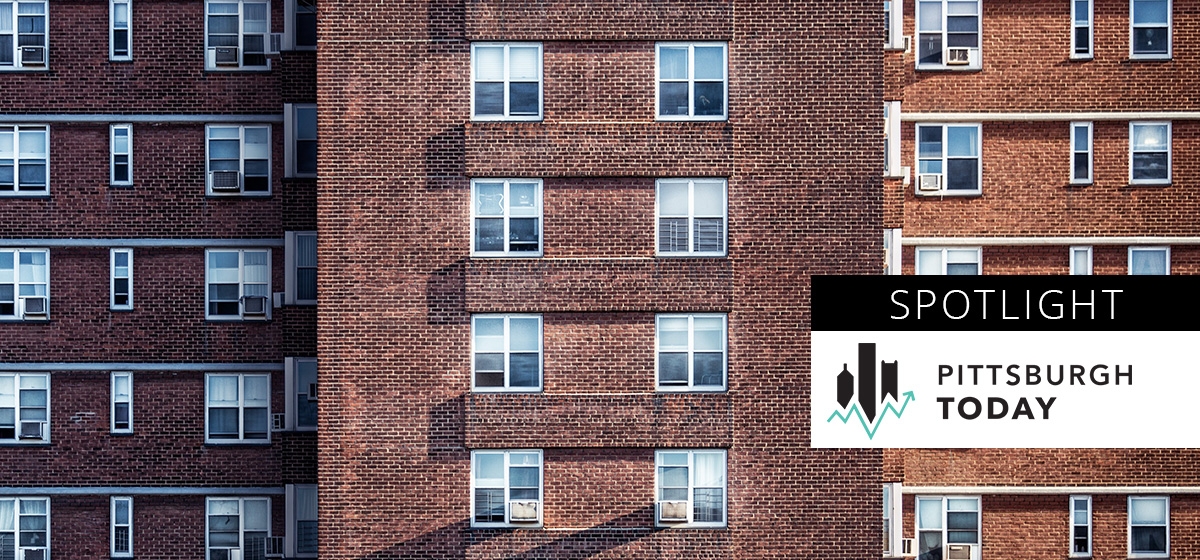Mandating Affordable Housing: A Complex Zoning Challenge

One Pittsburgh neighborhood could soon test a brand of zoning that requires developers to include affordable housing in new market-rate projects as a way to build the inventory of units available for residents earning less than the city’s median income.
Pittsburgh recently joined cities in 25 states that have adopted some form of inclusionary zoning, which compels private developers to contribute affordable housing. Some make it a requirement to build in a neighborhood. Some make it optional in exchange for incentives, such relaxing height and density restrictions to allow more units to be built on a property.
Either way, finding a workable formula involves a complex calculation of local market trends, building costs, profit margins, economic and demographic characteristics and other factors.
And making it mandatory ups the ante for figuring out how much affordable housing a city can demand from developers without damaging the market by making the prospect of building not worth the investment and effort.
Can affordable be profitable?
Whether inclusionary zoning is mandatory or voluntary, the key numbers are the percent of new housing units developers are asked to price below market rate and the income level at which those units are considered affordable.
Ordinances vary. The share of affordable housing they seek ranges from 5 percent to 20 percent of new units. Those units are typically priced for residents earning 30 percent to 80 percent of a city’s median income, which in Pittsburgh is $42,450. Most laws offer property tax exemptions and other bonuses to help offset the developer’s costs.
But even with tax relief, setting aside affordable units cuts into the return developers would likely realize with market-rate housing.
An average-sized market-rate apartment in Pittsburgh could cost $190,000–$210,000 to build with annual operating expenses averaging around $7,000, said Steven Guy, president and CEO of Pittsburgh-based Oxford Development Company. Rent for tenants earning 60 percent of the city’s median income couldn’t exceed $7,641 a year to be considered affordable, which barely covers operating expenses. Developers would rely on the building’s market-rate units to cover other costs and turn a profit.
The greater the percentage of affordable units required, the more difficult it is to make the numbers work for developers and their investors. “If you bring inclusionary into a project – whether it’s 5, 10 or 15 percent – you’re marrying it into that cost structure,” Guy said. “If it’s 5 percent of the units, you have a fighting chance. If you’re talking about 20 percent, you’re dead.”
Another concern is whether inclusionary zoning will make it difficult to navigate market trends, particularly in Pittsburgh, where tepid job growth and steady population decline dampen revenue potential. “You have to consider that putting zoning in place isn’t just for this year,” he said.
Strong real estate markets are attractive targets for inclusionary zoning. On one hand, higher demand, property values and rent in those neighborhoods tend to price lower-income residents out of the market. But the same factors offer developers opportunities to offset the cost of adding affordable units and realize a more acceptable return on investment.
Does it work?
Lawrenceville is one such neighborhood. It’s become a popular place to live and do business. Housing demand and prices have risen. But so has median rent, which has climbed above what a resident earning 80 percent of median income can afford. The neighborhood has also lost half of its “choice voucher” units, which very low-income families can afford with federal subsidies.
The city is looking to try mandatory inclusionary zoning in a pilot neighborhood. Community groups are drafting a proposal for Lawrenceville to be the one. “It’s not a panacea. None of the solutions are,” said Dave Breingan, executive director of Lawrenceville United. “But I think it’s relevant to Lawrenceville. With the pace of development, there are projects coming on that could allow you to leverage the private market to create affordable housing.”
He said Lawrenceville will likely follow the recommendations of a city task force, which include requiring developers to make 10-15 percent of new units affordable to residents earning 80 percent of the median income or less, depending on the strength of the local market.
Studies show the amount of housing produced with inclusionary zoning varies among cities, as do markets and the ordinances themselves. A mandatory program in Montgomery County, MD, for example, averages 358 affordable units a year, while a similar program in Fairfax County, VA, averages 117 units and one in Washington, D.C., produces an average of 42 units, according researchers with the nonprofit National Housing Conference.
Researchers are still sorting out the impact such zoning have on local markets. For example: Housing prices rose 2.2 percent across 65 California inclusionary zoning programs, but in San Francisco alone, the zoning had no effect. In Boston’s inclusionary zoning districts, housing prices rose 1 percent.
“One question is, does the overall percentage of affordability increase, stay stable or decrease when you add these programs,” said Ray Gastil, Pittsburgh planning director. “I don’t know if there are precise answers for that. I do know [inclusionary zoning] can generate hundreds of affordable units in neighborhoods and thousands in cities. Those units matter.”
Challenges encountered
Not surprisingly, laws that require developers to contribute affordable housing are controversial. Cities have faced political challenges, such as Nashville, where voluntary and mandatory laws were blocked in the Tennessee legislature.
Lawsuits are common. The most common legal argument against inclusionary zoning is that it amounts to an unlawful taking of property, said University of Pittsburgh law professor Gerald Dickinson. Such arguments have failed to sway state and federal courts in California, Washington, D.C., and Illinois, which saw inclusionary zoning as a legal land-use restriction.
But a mandatory inclusionary zoning ordinance has yet to be enacted in Pennsylvania. “We’re in uncharted territory here legally,” Dickinson said. “We have no idea how a state trial court or the state supreme court would rule.”





